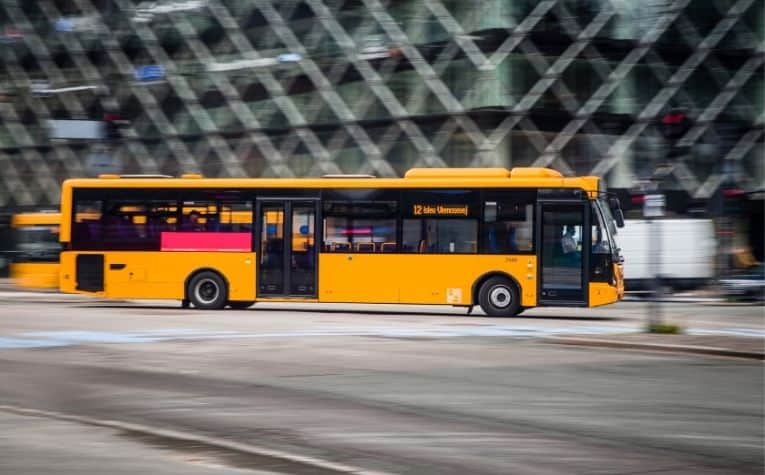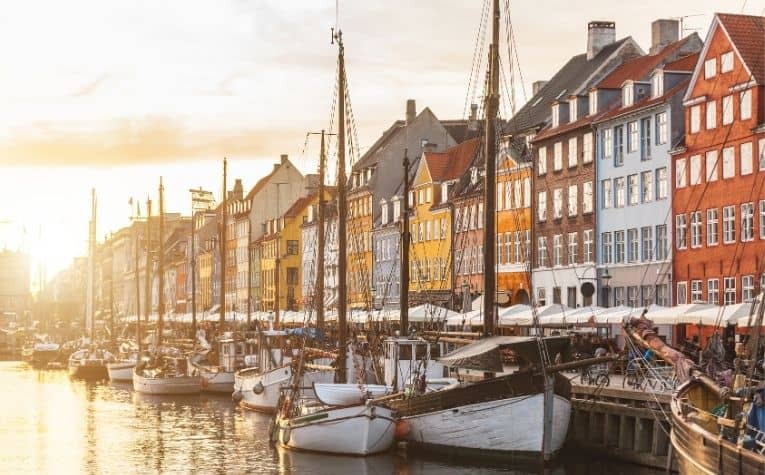Stockholm and Copenhagen are hugely popular due to their status as capital cities of Sweden and Denmark, respectively.
The two cities are important economic hubs for both countries and continue to attract tourists in large numbers. But of the two Scandinavian capital cities, which is more expensive?
Copenhagen is slightly costlier than Stockholm, with tourists spending an average of $190 a day.
Stockholm is Sweden’s economic center, with costs averaging $166 a day when vacationing in the city. But overall costs tend to vary depending on activities tourists participate in and hotel location.
Looking to learn more about the costs of touring Stockholm and Copenhagen? Then you couldn’t be in a better place.
Read on as we discuss some of the main differences between the two global cities as well as the main tourist attractions.
Sweden and Finland have an interesting relationship. See This Is Why Swedish is an Official Language in Finland to learn more.

Visiting Stockholm
Stockholm is Sweden’s economic, political and cultural center. The city is ranked among the world’s best cities due to its rich heritage and world-class establishments. [1]
Besides being Sweden’s capital, Stockholm also acts as the corporate headquarters for some of the Nordic region’s leading companies.
Restaurants in Stockholm
Food prices in Sweden’s capital aren’t excessively hiked. There is a rich blend of restaurants in Stockholm, which helps to accommodate people on different budgets.
As the capital city, Stockholm has an abundance of mid-range and top-end restaurants, more so in the touristy areas like Norrmalm and Gamla Stan. [2]
Meal prices range from 150-200 SEK ($16-$22) at mid-range restaurants.
However, the price of a main course can reach the 1000 SEK ($110) mark in top-end restaurants (excluding drinks).
Despite the high concentration of expensive restaurants, Stockholm is also rich in affordable options.
There are several food halls, snack bars, food trucks, and even decent low-priced restaurants that provide perfect alternatives to the expensive food served in high-end restaurants.
Transportation in Stockholm
Sweden has a safe and reliable transport system that connects Stockholm to other parts of the country.
Some of the means of public transport include underground trains, commuter trains, buses, trams, and ferry lines.
Getting around Stockholm is easiest when using underground trains.
But to book a slot, passengers are required to purchase underground tickets at SL Centers, newsagent kiosks, underground ticketing booths, through SMS or using the SL app.
All passengers are required to pay for tickets before boarding or risk attracting a 1200 SEK ($131) penalty.
Visiting Sweden doesn’t have to be difficult. See Paying in Sweden: Can You Use Euro or Danish Krone? to learn more.

Accommodation
Compared to other parts of Sweden, Stockholm has slightly higher accommodation costs.
However, the city has several hotels (both pricey and affordable), making it ideal for all guests regardless of budget.
Hotel prices in Sweden’s capital normally start from 600 SEK ($66) for a basic double room with a shared bathroom.
Depending on the time of the year, most mid-range hotels charge anywhere from 900-1300 SEK ($99-$144) a night.
On the other hand, deluxe rooms and suites can cost over 3000 SEK ($332), especially during peak seasons.
Stockholm also has several hostels for visitors on low budgets. [4]
Hostels are relatively cheap and are available for as little as 180 SEK ($20) a night. However, visitors will need to part with over 350 SEK ($39) to book quality hostels.
Sightseeing
Stockholm has a variety of free activities that visitors can partake in. However, tourists usually need to pay admission fees to access the city’s top attractions.
Museum entrance fees normally range depending on time and dates.
Museums like the Nobel and Nordiska are slightly lower-priced compared to the more-expensive Abba Museum, which costs 250 SEK ($28) for adults. [5]
Sightseeing in Stockholm costs slightly more compared to other parts of the country. However, the prices tend to vary depending on the time of the year.
Visiting Copenhagen
Besides being the capital of Denmark, Copenhagen is also the most populous city in the country.
A vast majority of the city’s population works in the service sector, which indicates Copenhagen’s focus on services and commerce.
The city has enjoyed a significant rise in popularity, transforming into one of the most visited locations in the region.
Restaurants in Copenhagen
Similar to Stockholm, the price of beer in the heart of Copenhagen greatly hinges on where you decide to buy, and of course, the type of drink.
The average price of Tuborg beer or a bottle of Carlsberg is around 30 DKK ($5).
You’ll even need to part with more cash if you fancy a taste of Gold Tuborg or other stronger beers.
55 DKK ($9) is the average cost of a pint of beer in a large-enough glass. Again, these prices depend on where you choose to buy.
It’s cheaper to buy beer at a supermarket than at a bar or restaurant. This explains why you’ll find many Danes in Copenhagen opting to buy cans of Heineken.
Transportation in Copenhagen
Copenhagen has one of the most organized transport systems globally. A public transport ticket can be used on all trains, the metro, and buses in Copenhagen.
However, all passengers must possess valid tickets to avoid incurring DKK 750 ($118) fines during an inspection.
All adults with valid tickets or city passes can tag a maximum of two children, provided they’re below 12 years.
Copenhagen gives travelers several options when it comes to transportation.
Visitors can purchase a single ticket, city pass, or even a Copenhagen card.
Purchasing single tickets is advisable if visitors don’t plan on moving around Copenhagen frequently.
A 2-zone ticket covers transportation across Copenhagen (without the airport). The ticket is valid for an hour after purchase and costs 24 DKK ($4).
There are different types of city passes in Copenhagen. A 24-hour Copenhagen pass (which includes travel to the airport) will set you back 75 DKK ($11).
For a 72-hour Copenhagen pass, passengers can expect to pay around 190 DKK ($30). Tickets for children under 16 come at special prices.
Visitors can also purchase the Copenhagen Card.
The price of the Copenhagen Card ranges from around 389 DKK to 889 DKK (depending on hours selected) and includes transportation in all of Copenhagen’s zones as well as entrance tickets to over 50 museums and tourist attractions in the city.
Sweden celebrates many holidays. See Do They Celebrate Halloween in Sweden? to learn more.
Accommodation
Renting large apartments in Copenhagen can prove costly, with most prices starting at 16,000 DKK ($2500).
On the other hand, renting apartments with 2-3 rooms plus a kitchen and bathroom can cost anywhere between 13,000 DKK ($2036) and 15,000 DKK ($2350).
Small apartments and studios are usually in high demand and can be rented to couples without children or individuals.
The price range usually starts from 8,000 DKK ($1253) to 10,000 DKK ($1566). Single rooms in shared flats are also available for rent in Copenhagen and are significantly cheaper than other accommodation options.
The cost of hotel bookings in Copenhagen greatly hinges on location. High-end hotels like SKT. Petri can cost up to $2,997 a night.
Elite guests can opt to spend a night at the costly Hotel d’Angleterre provided they’re willing to part with up to $7,790 a night.
Copenhagen also has affordable accommodation, especially towards the outskirts. It is possible to find low-budget hotels and hostels charging $30 a night.
However, the quality of cheap accommodation is impossible to compare to the costlier options.
Final Takeaway
Both Stockholm and Copenhagen are global cities with solid reputations not only as economic hubs but also as tourist destinations.
Stockholm is bigger and has more activities, making it more appealing for tourists looking to experience the Swedish culture in one of the world’s most active cities.
Despite being smaller in size, Copenhagen is costlier in terms of accommodation, transportation, and even entrance fees.
The price difference, however, isn’t too large.
The overall cost of touring both cities depends on budget and exact accommodation areas.
Spending a night at Copenhagen’s famed hotels might prove too expensive for budget travelers.
Both cities have affordable transport plans that allow travelers to save up their hard-earned cash.
References:
[3] https://sl.se/en/eng-info/fares/buying-tickets/
[4] Routes North
[5] https://abbathemuseum.com/en/visit/the-museum/
- BBC: Living In Copenhagen
- Routes North: Is Sweden Expensive
- Routes North: Where To Find Cheap Beer In Copenhagen
- Routes North: Where To Find Cheap Beer In Copenhagen
- Visit Stockholm: Public Transportation
- The Culture Trip: 9 Reasons Why You Should Live In Stockholm
- Budget Your Trip: Copenhagen Costs
- Wikipedia: Copenhagen
- Wikipedia: Stockholm
